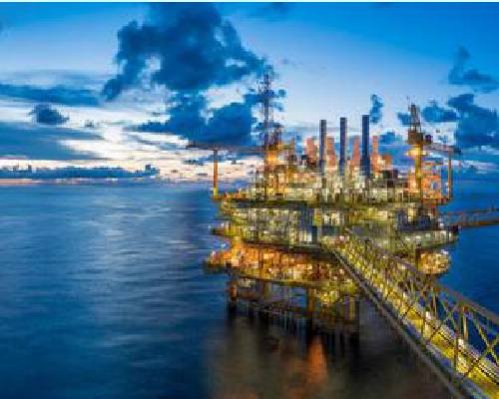Raw gas is processed into various products or fractions:
o Natural gas in its marketable form has been processed for a
specific composition of hydrocarbons, sour and acid components,
etc., and energy content. Content is typically 90% methane, with
10% other light alkenes.
o Natural gas liquids (NGL) is a processed purified product
consisting of ethane, propane, butane or some higher alkenes
separately, or in a blend. It is primarily a raw material for
petrochemical industry and is often processed from the condensate.
o Liquefied petroleum gas (LPG) refers to propane or butane or a
mixture of these that has been compressed to liquid at room
temperature (200 to 900 kPa depending on composition). LPG is
filled in bottles for consumer domestic use as fuel, and is also used
as aerosol propellant (in spray cans) and refrigerant (e.g., in air
conditioners). Energy to volume ratio is 74% of gasoline.
o Liquefied natural gas (LNG) is natural gas that is refrigerated and
liquefied at below -162 °C, for storage and transport. It is stored at
close to atmospheric pressure, typically less than 125 kPa. As a
liquid, LNG takes up 1/600 of the volume of the gas at room
temperature.
Energy to volume ratio is 66% of gasoline. After
transport and storage it is reheated/vaporized and compressed for
pipeline transport.
o Compressed natural gas (CNG) is natural gas that is compressed
at 2-2,2 MPa to less than 1% of volume at atmospheric pressure.
Unlike higher alkenes, methane cannot be kept liquid by high
pressure at normal ambient temperatures because of a low critical
temperature. CNG is used as a less costly alternative to LNG for
lower capacity and medium distance transport. Methane for vehicle
fuel is also stored as CNG.
Energy to volume ratio is typically 25% of
gasoline.
62
5.3 Gas processing
Raw natural gas must be processed to meet the trading specifications of
pipeline and gas distribution companies. As part of the purification other
components such as NGL is produced, and pollutants extracted.
The diagram shows an overview of a typical gas plant. Marketable products
are listed in blue and the production process is shown in grey as it is not
considered part of the gas plant.
Figure 10. Typical gas plant
63
5.3.1 Acid gas removal
Acid gases such as carbon dioxide and hydrogen sulfide form acids when
reacting with water, and must be removed to prevent corrosive damage to
equipment and pipelines. Hydrogen sulfide is also toxic and total sulfur
content is normally regulated.


